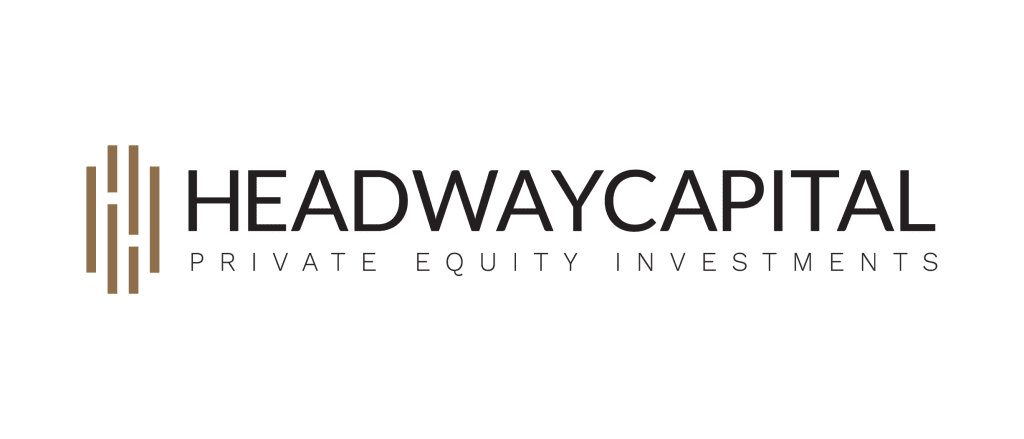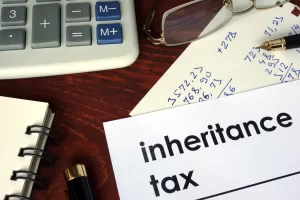Deciding the best way to invest $100,000 is a significant and exciting challenge that presents numerous opportunities for personal finance growth and wealth management. With a lump sum of this size, investors are uniquely positioned to explore diverse types of investments, each with its potential for returns, risks, and tax implications.
You may invest through the diversified options of mutual funds and ETFs, the tangible assets of real estate, or the emerging cryptocurrency markets. We will guide you through the essential steps and considerations for investing $100K, emphasizing the importance of diversification, strategic planning, and the role of professional financial advice in building a strong investment portfolio that aligns with your long-term financial aspirations.
What Should You Consider Before Investing $100K?
Investing $100,000 is a significant financial decision requiring careful thought and planning. Before diving into the vast sea of investment opportunities, several important factors must be considered to ensure that your investment aligns with your financial goals and risk tolerance.
Understanding these considerations can help you make informed decisions and establish a successful investment strategy.
- Financial Goals: Define what you wish to achieve with your investment. Whether building a retirement fund, generating passive income, or saving for a major purchase, your goals will significantly influence your investment choices and strategies.
- Risk Tolerance: Assessing your comfort level with risk is essential. Everyone’s risk tolerance differs, dramatically affecting how you allocate your $100K. High-risk investments, like individual stocks or crypto, may offer higher returns but come with increased volatility. Conversely, low-risk options like bonds or high-yield savings accounts provide more stability but typically yield lower returns.
- Investment Time-Frame: Consider how long you plan to invest your $100K. A longer investment horizon allows more time to recover from the market’s ups and downs, potentially making higher-risk investments more palatable. Short-term goals might necessitate safer, more liquid investments.
- Diversification: Diversifying your investment across different asset classes can reduce risk and improve potential returns. A mix of stocks, bonds, real estate, and other investments can protect against significant losses in any one area.
- Market Conditions: Keeping an eye on current market conditions, including interest rates and economic indicators, can offer insights into potential investment opportunities or risks. Market timing is challenging, but understanding the economic environment can inform investment decisions.
- Tax Implications: Be aware of the tax consequences of your investment decisions. Different investment vehicles have varying tax treatments, affecting your overall returns. Consider tax-advantaged investment accounts like Roth IRAs or traditional IRAs for retirement savings, which offer tax-free growth or tax-deferred benefits.
- Emergency Fund: Ensure you have a solid emergency fund before investing. Having accessible cash reserves for unexpected expenses is important and provides financial security without prematurely liquidating investments.
- Professional Advice: Consulting with a financial advisor can provide personalized insights based on your financial situation, goals, and risk tolerance. A professional can help you with everything you must know when investing $100K, from selecting suitable investment vehicles to building a diversified portfolio tailored to your needs.
Considering these factors can guide you in making the most of your $100,000 investment. By aligning your investment strategy with your personal finance objectives and risk profile, you can work towards achieving your financial goals while managing potential risks.
How To Determine the Best Investment Option for You
When investing a significant lump sum, such as $100,000, pinpointing the best investment option tailored to your financial goals and risk appetite is important. This section will examine the steps necessary to navigate the myriad investment choices, ensuring you make informed decisions that align with your long-term objectives.
Let’s detail these steps, including specific examples, mainly focusing on commercial and multifamily real estate investments.
1. Find a Starting Point
Begin by outlining what you aim to achieve with your investment. Are you looking for a steady income, aiming to grow your wealth over the long term, or saving for a specific goal like retirement or purchasing a home? For instance, if generating passive income is a priority, investing in real estate, especially multifamily properties, can provide regular rental income alongside potential property value appreciation.
Evaluating your current financial situation, like assessing your liquidity needs, existing debts, and emergency fund adequacy, is another piece of the starting point. If you have high-interest debts, such as credit card balances, paying these off might offer a better “return” by saving on interest payments than other investment avenues.
2. Determine Your Risk Tolerance
Understanding your comfort level with investment risk is the second step. Risk tolerance varies widely among individuals and influences which investment options suit you best.
Consider low-risk investments like bonds or high-yield savings accounts if you prefer stability. These options offer safer returns, though they might be lower than riskier investments.
If you’re comfortable with volatility for higher returns, the stock market or specific real estate sectors, like commercial developments, might be more appealing. For example, commercial real estate can offer significant returns through capital appreciation and rental income. However, it’s sensitive to economic cycles, with demand potentially fluctuating based on business health and consumer trends.
3. Assess Your Investment Options
In step three, look for a balanced mix of investments to help mitigate risk while striving for growth. Diversifying across asset classes, such as equities, bonds, and real estate, can reduce the impact of any single investment’s poor performance on your overall portfolio.
Mutual funds and ETFs provide an easy way to achieve diversification within these categories, allowing you to invest in a broad portfolio of stocks or bonds.
Directly investing in real estate properties, particularly in multifamily and commercial real estate, presents a tangible way to diversify and can offer income through rents and long-term capital gains. Multifamily real estate, such as apartment buildings, provides the benefit of multiple tenants contributing to your cash flow, reducing the financial impact of any vacant unit.
Commercial real estate, while potentially more volatile, can yield higher returns based on more extended lease agreements with businesses and appreciation in the investment property value.
A financial advisor, or real estate investment advisor, can provide valuable insights tailored to your risk tolerance and investment goals. For real estate investors, professionals can help evaluate properties, understand market trends, and estimate potential returns and expenses.
5 Ways To Invest Your Money
Here are five ways to invest $100,000 that have proven lucrative returns:
1. Exchange Traded Funds (ETFs)
Exchange-traded funds (ETFs) are similar to mutual funds that trade through a brokerage account on stock exchanges, such as individual stocks and holding assets, like stocks, commodities, or bonds.
One of the critical attractions of ETFs, especially for those contemplating the best way to invest a lump sum like $100,000, is their ability to offer diversified exposure across various asset classes, sectors, or geographic regions, all within a single transaction. This diversification helps mitigate the risk of investing heavily in individual stocks.
Moreover, ETFs are known for their cost-effectiveness, typically featuring lower expense ratios than mutual funds, making them a financially savvy choice for investors seeking to maximize their returns.
The potential returns from investing $100,000 in ETFs can vary widely, influenced by the specific ETFs chosen, prevailing market conditions, and the investment duration. ETFs that track broad market indices might offer returns reflective of the overall market’s performance. In contrast, those focusing on specific sectors or themes could yield higher returns, albeit with increased risk.
Historically, broad market ETFs have provided average annual returns between six and 10 percent over the long term. However, this is subject to change, and past performance does not guarantee future results.
For investors, ETFs are generally most suitable for medium to long-term investment horizons, ideally spanning five to 10 years or more. This extended timeframe helps cushion the blow of market volatility while allowing investors to capitalize on the compounding growth of their assets. Deciding when to withdraw funds from ETF investments should be guided by personal financial goals, the need for portfolio rebalancing in response to market fluctuations or changes in risk tolerance, or the necessity to liquidate assets for significant life events or purchases.
2. Mutual Funds
Mutual funds are a compelling choice for investors looking to invest $100,000, thanks to their blend of diversification and professional management. By pooling funds from multiple investors, mutual funds invest in a wide array of stocks, bonds, or other securities, offering a balanced approach to risk by spreading investments across different asset classes. This diversification helps mitigate the impact of poor performance in any single investment.
The advantage of mutual funds extends to the expertise of professional fund managers who handle the fund’s strategy and investment decisions. This is particularly appealing for investors who prefer a hands-off approach, allowing them to benefit from the skills and experience of investment professionals without needing to make the decisions themselves.
Investing $100,000 into mutual funds provides access to a diversified portfolio and opens up opportunities to participate in specialized funds that may require higher minimum investments. The returns on mutual funds vary based on the fund’s strategy and market conditions, with equity funds typically offering higher potential returns at a greater risk and bond funds focusing on stability with generally lower returns.
3. High-Yield Savings Account
A high-yield savings account offers higher interest rates than traditional savings accounts, making it an attractive option for investors looking to maintain liquidity while earning a modest return on their cash reserves.
Unlike investing in the stock market or real estate, putting your money into a high-yield savings account provides a safe and accessible place for your funds, with the added benefit of accruing interest at rates significantly above the national average.
For those considering the best way to invest $100,000, a high-yield savings account is a solid foundation for any diversified investment strategy, particularly for the portion of your portfolio designated as an emergency fund or for short-term financial goals. The returns on a high-yield savings account with a $100,000 investment can vary depending on the interest rate offered by the bank or financial institution.
Still, they typically provide a steady, risk-free income through compound interest. While the returns might not be as high as those potentially offered by more aggressive investment options like ETFs or mutual funds, the safety and liquidity of high-yield savings accounts make them essential for financial planning. The best time frame for keeping funds in a high-yield savings account largely depends on your financial goals and liquidity needs.
4. Real Estate
Investing in real estate, mainly through passive investments in commercial multi-family properties, presents a compelling avenue for those with $100,000 to diversify their portfolio and build wealth.
Passive investing allows individuals to benefit from the income and potential appreciation associated with property ownership without the day-to-day responsibilities of managing the properties themselves. Commercial multi-family real estate, encompassing apartment complexes and similar properties, offers the dual advantages of generating steady rental income from multiple tenants and potentially experiencing less market volatility. This investment strategy can be desirable for those seeking stable, long-term returns. It also has the potential to provide substantial tax benefits.
Offering a gateway into commercial multifamily real estate investment for high-income individuals, Headway Capital simplifies a complex process. With experts tackling the intricate aspects of property procurement, management, and selling, we offer our clients access to select investment opportunities. These options are designed to offer a steady stream of income, enhancing and safeguarding wealth while evading typical public market turbulence.
For accredited investors looking to invest $100,000, partnering with Headway Capital offers a streamlined path to entering the real estate market, combining commercial multi-family properties’ growth potential with passive management’s convenience.
5. Individual Retirement Account
An Individual Retirement Account (IRA) offers a tax-advantaged way to save for retirement, making it an essential part of a diversified investment strategy, especially for those looking to invest a lump sum like $100,000. IRAs come in various forms, including Traditional IRAs and Roth IRAs, each with tax benefits and rules regarding contributions, withdrawals, and tax treatments.
Here’s what you need to know about both types of IRAs:
- Traditional IRA: Contributions to a Traditional IRA may be tax-deductible depending on your income, filing status, and access to a workplace retirement plan. The money in the account grows tax-deferred, meaning you will only pay taxes on the gains once you withdraw the funds in retirement. This can be particularly advantageous if you expect to be in a lower tax bracket after retirement, as it allows the investment to grow without the immediate impact of income taxes.
- Roth IRA: Roth IRAs offer tax-free growth and tax-free withdrawals in retirement, provided certain conditions are met. Contributions to a Roth IRA are made with after-tax dollars, so there’s no tax deduction at the time of contribution. However, the benefit of tax-free withdrawals in retirement can be significant, especially for those who anticipate being in a higher tax bracket or for those looking to minimize their tax liabilities in retirement.
The Bottom Line
Investing $100,000 wisely across ETFs, mutual funds, high-yield savings, real estate, and IRAs offers diverse ways to grow wealth. For those particularly interested in real estate, Headway Capital Investments specializes in passive investments in commercial multi-family properties, providing an accessible way to enter the real estate market with expert guidance and management.
Ready to explore the potential of real estate investment with your $100,000? Connect with Headway Capital today and let us help you build a solid, income-generating portfolio tailored to your financial goals.
Sources:
What Is Your Risk Tolerance? | Forbes Advisor
How to start investing: A guide for beginners | Fortune Recommends
Mutual Funds: Different Types and How They Are Priced | Investopedia
What Is a HYSA (High-Yield Savings Account), and How Does It Work? | Tally
A guide to Individual Retirement Accounts (IRAs) | USA Today









